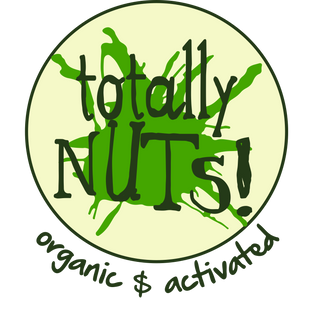All Brazil nuts, organic or otherwise, come from undisturbed Amazon rainforest (as an aside - what more reason do you need to stop its destruction??!). The ecology of the Brazil nut tree is a lesson in forest mutualism and a healthy local economy.
First we will set the scene.... Imagine vibrant, virgin Amazon rainforest. Towering trees, cathedral-like space and majesty. Bird sounds, monkey sounds. Humid and a slight undercurrent of mould smell. Look up and you may be lucky to see the crown of one of the tallest trees in the forest - the Brazil nut tree, that can grow up to 50 m tall. Listen carefully though, because if you hear something like a bowling ball falling through the leafy layers towards the ground then run away fast because it is likely a Brazil nut seed pod, weighing up to 2.3kg.
Now if you fly on your magic wings up to the canopy and take a close look at the flowers on that Brazil nut tree, you may be fortunate enough to see the miracle of its pollination. Brail nut flowers have a strong lid over them, and only one species of bee - the euglossine, carpenter bee - has a strong enough tongue to open them and get to the nectar inside. And, only the female bees do it.
But of course, the female bees also need male bees in order to make baby bees... In order to attract females, the male euglossine bee gathers fragrant chemicals from a particular species of orchids. They do not take nectar or anything else - just the perfume. If they cannot find any orchids, the females are not interested and there will be no baby bees (in case you are wondering, these bees do not live in hives like the ones we are used to).
So, if the forest is damaged and the orchids can no longer survive, then the bees cannot survive, then the Brazil nut trees lose their only pollinators... Which is why Brazil nut plantations never work.
A quick note as well about those giant hurtling cannonball seed pods.... Each pod contains 12-24 nuts, which are protected by a shell so hard that researchers could not work out for a long time how it was ever opened for seed dispersal to take place. The secret was the agouti, a strange giant rodent-like animal of the Amazon that has sharp chisel like teeth. He is the only one who can get through the tough outer coating of the seed pod to get to the seeds inside.
Since Brazil nuts trees require undisturbed forest in order to survive, the economy of the nut harvesting has remained a low-level, local economy and not been taken over by massive commercial operations. The harvesting is still mostly done by local people, and taken by boat to the nearest town.
So by buying brazil nuts you are contributing to local subsistence economies and helping save the Amazon forest! And that's without even talking about their nutritional benefits!

